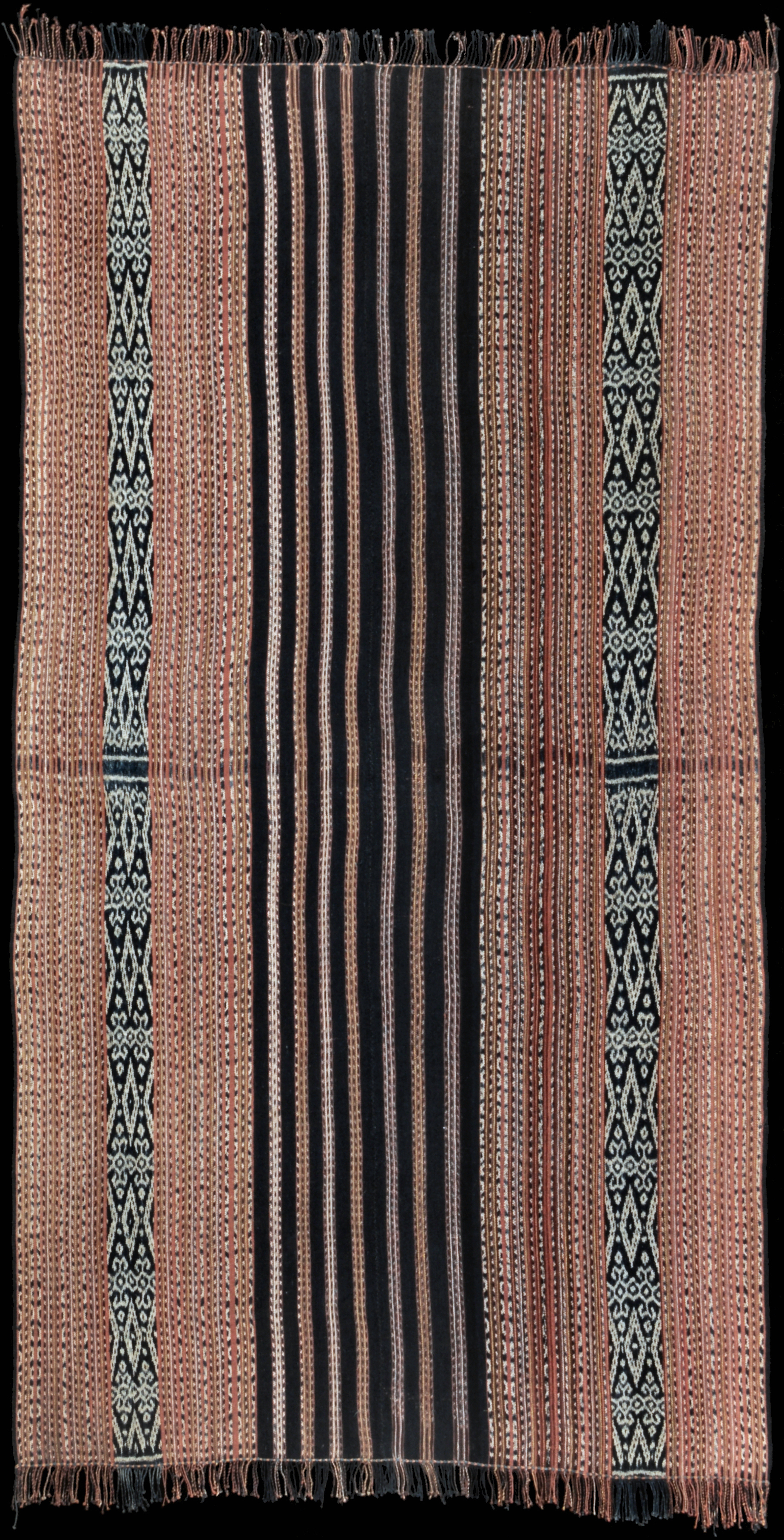| |
 mouse over to magnify mouse over to magnify
| | | | 120 Timor, West Timor
Tais mane (men's wrap)
| | Locale: | Waenopu (eastern part of Timor Barat, Belu Regency). | | Period: | 1930-1940 | | Panels: | 2 | | Design: | Belu style: scores of narrow ikated stripes (overall tone soft pink) flanking two bands with geometrical design in white on indigo, called leunkah, a variation on the kaif motif, representing connection with the ancestors. Note the subtle asymmetry: the seam does not run in the middle of the striped mid-section, but between the fourth and fifth ikat stripes from the left, so that four stripes are on the left panel, three on the right panel. The stripes on the two panels are also slightly different in colour, those on the left a pale lilac, those on the right tending towards purple. The narrow ikated stripes bordering the central section have a similar difference of palette. | | Size: | 101 x 189 cm (39.7 x 74.4 in) | | Weight: | 795 g (416 g/m2) | | Yarn: | Cotton, hand-spun, coarse | | Comment: | Old Timor blanket in Belu style with excellent weaving and pleasant tonality. Note that the design suggests three panel construction, though it is made of two - a common feature in the area. The finest ikated patterns are only two threads wide, meaning that (since the two panels were made at the same time, with the warp web folded over in the middle, creating four basic ikated motifs) the ikating was done on skeins merely eight yarns wide, which places this weaving among the most finely made ikat anywhere in the archipelago. Ex collection Verra Darwiko. | | Background: | Additional information in chapters on Timor and West Timor. | | Published: | Ikat Textiles of the Indonesian Archipelago, 2018.
Timor: Totems and Tokens, 2019.
| | Sources: | Very similar to tais mane from Manulea, Malaka Tengah, in Yeager & Jacobson, Textiles of Western Timor, Plate 229, except that it is symmetric. Leunkah motif illustrated on Belu-style tais mane from Manulea, Fig. 168. | | |
 ©Peter ten Hoopen, 2025
All rights reserved.
|
|


